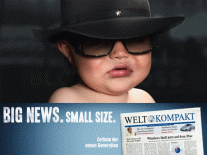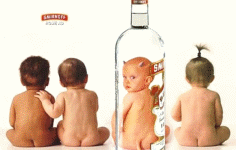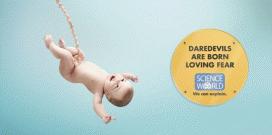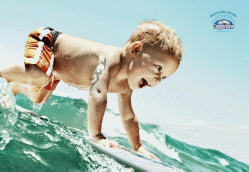In this task dedicated to the portrayal of individuals from different developmental periods in advertising/media, we shall focus on the early childhood. The archetype of a child is among the basic ones; it is one of the most tradable images and is often used in advertising of the different product groups since children are good eye-catchers; they evoke positive emotions and elicit a smile; all of which enhances the brand loyalty.
According to Jung, an archetype is “the inherited part of the psyche; structuring patterns of psychological performance linked to instinct; a hypothetical entity irrepresentable in itself and evident only through its manifestations” (Samuels, Shorter & Plaut, 1991). For the child archetype, the values include the joy of life, fun, carelessness, and the new opportunities. This archetype appears as a person who believes that life is beautiful; it is a fun game and entertainment. He is an optimist, a dreamer, and inventor; an open-minded person open to experiments. In order to evoke strong emotions, the archetype of a child is often combined with the hero archetype; for example, this method is used in many myths and tales. Children are often portrayed with powers that far surpass the human measure. In this work we have selected some of the advertisements that take advantage of this image, that is, the image of children with “super” abilities.
Children’s images frequently extend to the products that are not intended for children, such as banks, magazines, and even alcohol. Here is an ad of a half-size edition of a German daily newspaper Die Welt:

The slogan alludes to the saying “size does not matter.” It depicts a child as a sheriff, implying that, irrespective of his age, he bears a great responsibility for enforcing the law in the country.
The second image is a vodka advertisement:

The child is shown through the bottle of vodka as if it was a magnifying glass or X-ray glasses. Along with children, people of different age periods were used in this advertising campaign, unleashing their inner desires, meaning that the child image is not the only means to achieve the goal. However, in this exact case, the ad literalizes the saying “the little demon of a child”.

An advertisement for the Science World at Telus World of Science. It is a Canadian scientific center that features many permanent interactive exhibits and displays, as well as areas with varying topics (Science World Vancouver, 2015, para. 1). In this particular ad, a shocking image of a bungee child is used to attract visitors to the center. The child is once again endowed with supernormal powers.
Just like on this ad:

It is an ad by Euro RSCG promoting a moisturizing sunscreen Copperstone. The slogan says “back to baby-soft skin.” The child is used to portray an adult surfer, whose skin is literally baby-soft.
Undoubtedly, the image of a surfer, just like that of a baby sheriff and a bungee baby, coincides with the hero archetype. In advertising, the archetype of the hero is found as a symbol of the active principle. It is expressed in the idea of overcoming the obstacles and competitiveness. His values include professionalism, victory, entrepreneurial attitude, and money. It is a person who easily handles with complex undertakings and readily accepts the challenge. When this archetype is embodied as a baby, it is guaranteed to draw attention, which is why this concept is frequently used by the advertisers.
References
Coppertone: Surfer. (n.d.). Web.
Samuels, A., Shorter, B., & Plaut, F. (1991). A Critical Dictionary of Jungian Analysis. London: Routledge.
Science World Vancouver. (2015). Web.
Science World: Bungee baby. (2009). Web.
Smirnoff Vodka. (n.d.). Web.
Welt Kompakt. (n.d.). Web.